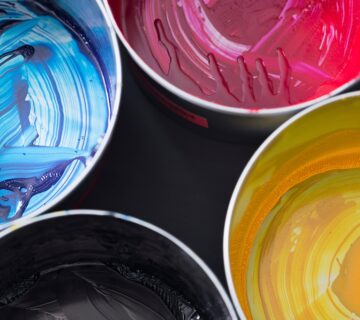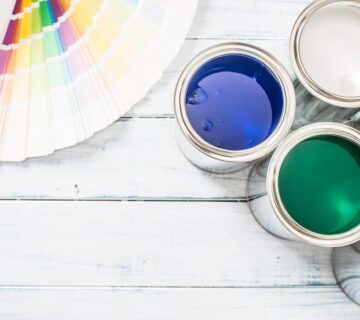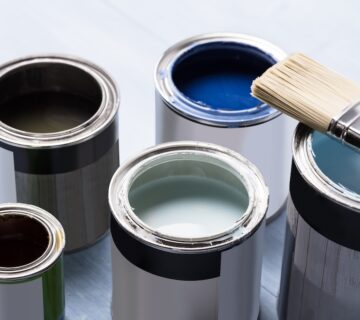For home renovators looking to elevate their projects, mastering advanced painting techniques can be a game-changer. These methods go beyond the basic brush and roller application, offering a way to add texture, depth, and personalized flair to your spaces. In this blog, we explore some advanced painting techniques that can transform a room from ordinary to extraordinary, adding professional-level polish to your renovation projects. Learning and applying these techniques can also be a fulfilling creative process, allowing for a true expression of individual style.
Faux Finishes for Depth and Character
The Art of Trompe L’oeil
Trompe l’oeil, meaning ‘deceive the eye’ in French, is a technique that creates optical illusions of three-dimensional objects on flat surfaces. This method can add depth and interest to a room, creating the illusion of architectural details like moldings, windows, or niches. The successful implementation of trompe l’oeil requires not only painting skills but also an understanding of perspective and shading to create a convincing illusion. To truly master trompe l’oeil, an artist must also have a deep appreciation for the interplay between light and color. Additionally, understanding the subtleties of visual perception is critical in transforming a flat painted surface into a lifelike scene that can fool the eye.
Venetian Plaster Technique
The Venetian plaster technique, which involves applying a mix of plaster and paint to create a textured, layered look, can give walls the appearance of natural stone or marble. This technique requires skill in layering and smoothing the plaster to achieve the desired effect. The play of light and shadow on the textured surface can bring a room to life, providing a touch of old-world elegance. Moreover, Venetian plaster is highly durable and can last for many years. This makes it a practical investment for those seeking a blend of timeless beauty and long-term performance in their living spaces.
Stenciling for Custom Designs
Personalized Wall Art
Stenciling allows you to add custom designs to your walls. From intricate patterns to bold graphics, stenciling can be used to create feature walls or add decorative elements around door frames or ceilings. It requires precision and patience, but the results can be stunning. With a careful application, stenciled walls can serve as the focal point of a room, reflecting a personal theme or aesthetic. Additionally, the flexibility of stenciling enables you to replicate the design in different colors and finishes across various rooms. This creates a cohesive look throughout the home while allowing each space to maintain its unique character.
Layering Stencils
For a more complex and detailed look, consider layering different stencils. This technique involves applying multiple stencil designs in layers, often using different colors for each layer. The layering can produce a rich tapestry of images that look hand-painted by an artisan. This approach to stenciling allows for the creation of intricate and personalized artwork on walls, furniture, or fabric. It makes it a versatile choice for those looking to introduce custom motifs and detailed patterns into their decor.
Strie Technique for a Fabric-Like Effect
The strie technique, also known as dragging, involves dragging a dry brush through wet paint to create fine lines that mimic the texture of fabric like linen or silk. This subtle but elegant effect adds sophistication to a room. It is particularly effective in spaces where the interplay of light and texture can be fully appreciated. Strie painting requires a deft hand and a keen eye for detail to produce the consistent, fine lines that give walls a delicately striated appearance, reminiscent of the graceful patterns found in natural textiles.
Sponging for a Multidimensional Look
Sponging is a popular faux finishing technique that uses a natural or synthetic sponge to apply or remove paint, creating a textured, multi-tonal look. It’s excellent for hiding imperfections and adding visual depth to walls. The technique allows for a high degree of customization depending on the colors used and the application method. Sponging not only enhances the visual texture but also introduces a sense of movement and depth. This makes it an ideal choice for creating an organic, lively atmosphere in a room.
Color Washing for a Soft, Subtle Finish
Color washing involves applying a thin layer of a lighter, translucent color over a base color. This technique can create a soft, subtle finish, with the base color showing through. It’s ideal for achieving an aged or antique look. The resulting patina can contribute to a warm and welcoming ambiance. Additionally, color washing can be an excellent backdrop for both classical and contemporary furnishings, bridging different styles by adding a timeless quality to the decor.
Rag Rolling for a Dynamic Texture
Rag rolling is similar to sponging but involves rolling a rag up and down the wet painted surface. This technique can create a variety of textures, from soft and subtle to rich and dynamic, depending on the type of rag used and the method of application. Experimenting with different fabrics and pressures can yield an array of artistic effects. Furthermore, the versatility of rag rolling allows for personalized adjustments that can cater to the desired intensity of texture. This offers a unique alternative to traditional flat wall finishes and infuses the space with character and depth.
Wood Graining for a Natural Wood Effect
Wood graining is a technique used to mimic the appearance of wood. Using special tools, you can paint a surface to look like various types of wood, complete with grain and knots, adding a rustic or elegant touch depending on the chosen wood style. The realism of this technique depends on the painter’s ability to replicate the intricate patterns of natural wood. Mastering wood graining can turn ordinary surfaces into luxurious imitations of fine woodwork, enhancing the aesthetic appeal of furniture or features without the expense of actual hardwood installations.
Final Thoughts
Advanced painting techniques offer an array of options for home renovators to add unique touches to their projects. From the illusion of depth with trompe l’oeil to the textured elegance of Venetian plaster, these methods require practice and patience but can significantly elevate the look and feel of a space. For the daring DIYer or the seasoned professional, these techniques can add a distinct, personalized flair to any renovation project. For more home renovation tips and techniques, visit our website at sisupainting.com and explore our blog at sisupainting.com/blog.





No comment